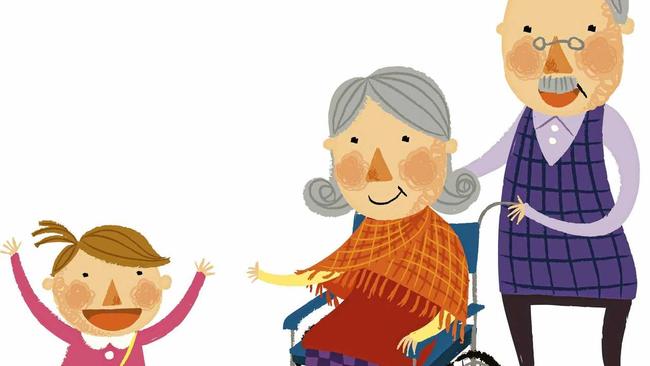Building a better society brick by brick
BUILDINGS are not just a bunch of walls and nuts and bolts that hold up a roof, but extensions of the people who live there and the way a society functions.

Grafton
Don't miss out on the headlines from Grafton. Followed categories will be added to My News.
ARCHITECTURE makes a powerful statement. Bad examples are blights on the landscape that can hang around like warts for decades, while the good stuff becomes legendary like Utzon's Sydney Opera House, and Lloyd Wright's Guggenheim Museum in New York or his famous residential address Fallingwater in Pennsylvania.
Due to an unhealthy obsession with architecture, I've watched a few thousand home shows in my time. One of the most memorable wasn't a grand design as such but a thoughtful modest and modern offering in a small village in England where a couple were re-evaluating their lives after the man of the house lost both legs and almost his life in Afghanistan.
The house they lived in was inappropriate for wheelchair access and so this young couple were going to put his compensation to good use by literally starting with a clean slate and building a contemporary home that would cater to the young soldier's needs into the future.
When the design was completed it was a glorious example of clever stylish design. There wasn't a bulky railing or ugly ramp in sight. It didn't scream a maimed person lives there, it shouted independence, sophistication, style and thoughtfulness. The aids he required were discreetly engineered throughout the house, using appealing materials and featuring the smooth sleek finishes you would expect from cutting edge architectural practice. Gone were the big chunky plastic eyesores, or add-ons that often come with getting older or needing assistance to get around your castle. They were not denying who lived there, they just didn't want it to dictate their situation at every turn. They were only young, and this house was the first step in rebuilding their shattered lives.
This reminded me of the profound effects social architecture, and clever, thoughtful design, can have on human lives, from those living a disability to the homeless.
Buildings don't just have to be a bunch of walls and nuts and bolts that hold up a roof overhead, they are extensions of the people who live there and, in the bigger picture, the way a society functions.
Unwelcoming gated communities, enormous imposing fortresses that serve as family homes, even the removal of schools from the centre of a townships are just a few of the architectural trends that have changed the landscape and in turn the way we interact. Who sees kids walking or riding their bikes to school these days?
A new book on the topic of social architecture delves into this subject and more specifically the effects it can having on the elderly.
Architect Matthias Hollwich's "New Aging" offers a "radical blueprint for rethinking and redesigning old age", and one of his key mantras is that "nursing homes should never be alone".
This makes perfect sense. Why build a place isolated from the rest of the community for old people to sit in and, well, be around other old people? It's like putting them out to pasture except indoors. Caring staff, visitors and daily programs help alleviate the boredom but as far as witnessing daily, incidental activity from the wider community goes, there is generally none which is purely down to a building's location.
As Hollwich suggests why not look at dual occupancy structures where perhaps an old age home is located in the same premises a pre-school operates. Or near a sports ground.
Imagine the joy the elderly would glean from watching children coming and going to their 'school' each morning and hearing the chatter of youth from across the yard. Not every older person has access to grandchildren so a friendly wave in the morning or cheery hello would work wonders in spreading a little incidental happiness.
Feeling inclusive in their own community can be as simple as seeing the young and their families go about their daily business. They don't need to engage directly, just be present through vicinity.
Of course a proximity like that would also lend itself to an official monthly visit by the children to perhaps sing a song or just have a morning tea together. Sure the obligatory, fun-sucking OH&S issues would have to be sorted out but as has been asked on many occasions 'what price is happiness?'.
Hollwich also suggests that having an aged cared place in a busy part of town would also encourage more visitation as there is less of a barrier if it sits within an area where lots of other activities take place.
Simply put, this architect's mission is to promote "a design philosophy that makes everyone more comfortable, connected and happy" which seems like a no-brainer to me.
Of course this concept doesn't just apply to the elderly, but it's a good starting point.
It's not so much about forcing people together through town planning but more about creating an architectural version of social media where people go about their daily business, crossing paths with a variety of people, not just clones of one another.
Designing spaces for a healthier, happier society means every age group, race and ability benefits from the broader sense of cohesion and the feeling of inclusiveness it can offer. Being able to achieve this through bricks and mortar is a promising concept and one that councils, developers and businesses should consider as we take our communities into the future.
Originally published as Building a better society brick by brick


